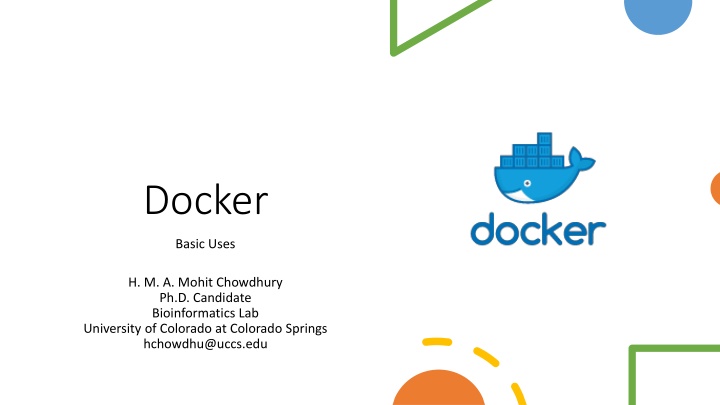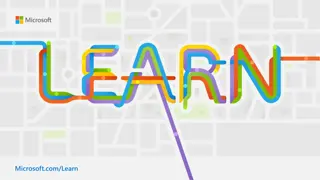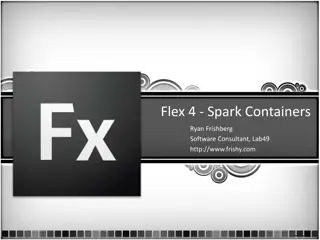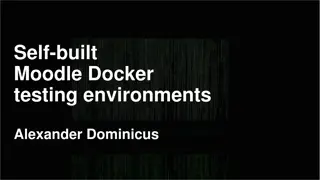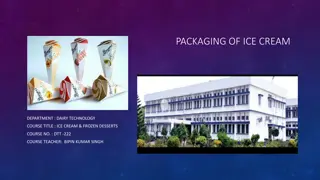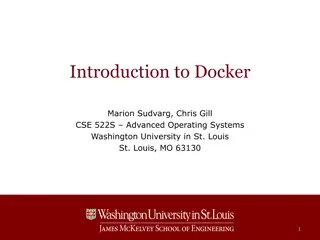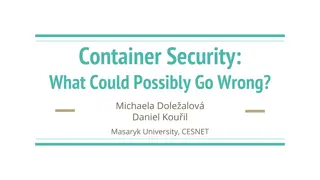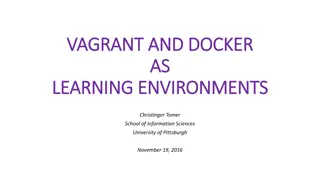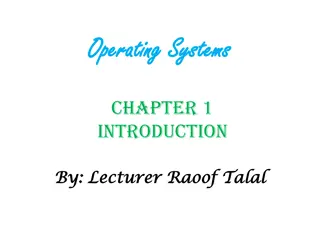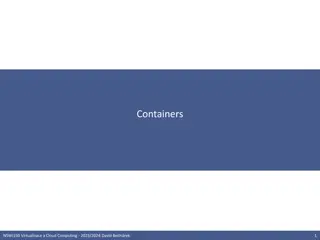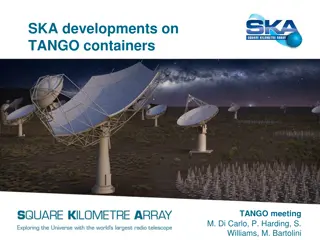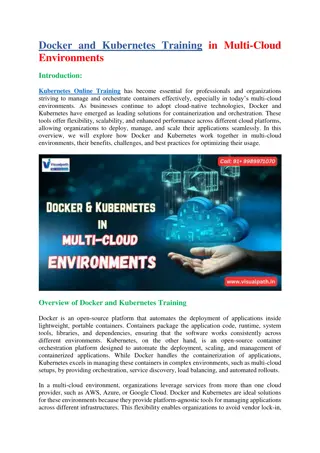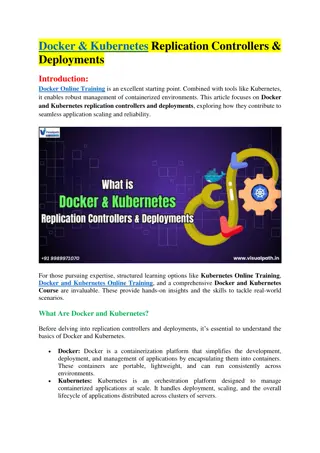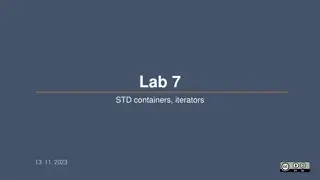Introduction to Docker: Operating System for Containers
Docker is an operating system that packages software into standardized units called containers, which contain everything needed to run the software. Learn about creating, manipulating, and managing Docker containers efficiently.
Download Presentation

Please find below an Image/Link to download the presentation.
The content on the website is provided AS IS for your information and personal use only. It may not be sold, licensed, or shared on other websites without obtaining consent from the author.If you encounter any issues during the download, it is possible that the publisher has removed the file from their server.
You are allowed to download the files provided on this website for personal or commercial use, subject to the condition that they are used lawfully. All files are the property of their respective owners.
The content on the website is provided AS IS for your information and personal use only. It may not be sold, licensed, or shared on other websites without obtaining consent from the author.
E N D
Presentation Transcript
Docker Basic Uses H. M. A. Mohit Chowdhury Ph.D. Candidate Bioinformatics Lab University of Colorado at Colorado Springs hchowdhu@uccs.edu
What is docker Docker is an operating system for containers. Docker packages software into standardized units called containers. Containers have everything the software needs to run including libraries, system tools, code, and runtime. Docker can enforce hard memory limits, which allow the container to use no more than a given amount of user or system memory, or soft limits.
Version: docker version Show images: docker images Create an Ubuntu image with python 3 with Dockerfile: Manipulation of an image FROM ubuntu:20.04 ENV DEBIAN_FRONTEND noninteractive RUN apt-get update RUN apt-get install -y software-properties-common gcc RUN add-apt-repository -y ppa:deadsnakes/ppa RUN apt-get install -y python3.8 python3-distutils python3-pip python3-apt Build a docker image using Dockerfile: docker build t <image_name> . Pull a docker image from remote repo: docker pull <repo> Remove an image: docker image rm <image_id/image_name> docker rmi <image_id/image_name>
Create a container: docker run -it -d --name <container_name> -v ${PWD}:${PWD} <image_id/image_name> Enter into a container: docker exec -it <container_id/container_name> /bin/bash Update an image with a container: docker commit < container_id/container_name> <image_id/image_name>:<tag> Start a container: docker start <container_id/container_name> Stop a container: docker stop <container_id/container_name> Show running containers: docker ps Show all containers: docker ps a Remove a container: docker rm <container_id/container_name> Manipulation of a container
Login into a docker repo: docker login username <username> Create a docker repo image: docker tag <image_id/image_name> <repo/image_name> Push to remote repo: docker push <repo/image_name> Using remote repository
Thank you Have a question? Still have a question? Mail at hchowhdu@uccs.edu
Useful Link https://www.hostinger.com/tutorials/linux-commands https://www.digitalocean.com/community/tutorials/how-to- install-and-use-docker-on-ubuntu-20-04 https://docs.docker.com/engine/reference/commandline/doc ker/ https://github.com/ufoym/deepo https://cheatography.com/typo209/cheat-sheets/comprehensive-vim-cheat-sheet/ https://www.youtube.com/watch?v=j9AS71ps_hc https://www.youtube.com/watch?v=fmE_YjqvfFo https://www.youtube.com/watch?v=WD-HDSdGrUw https://www.youtube.com/watch?v=WD-HDSdGrUw
